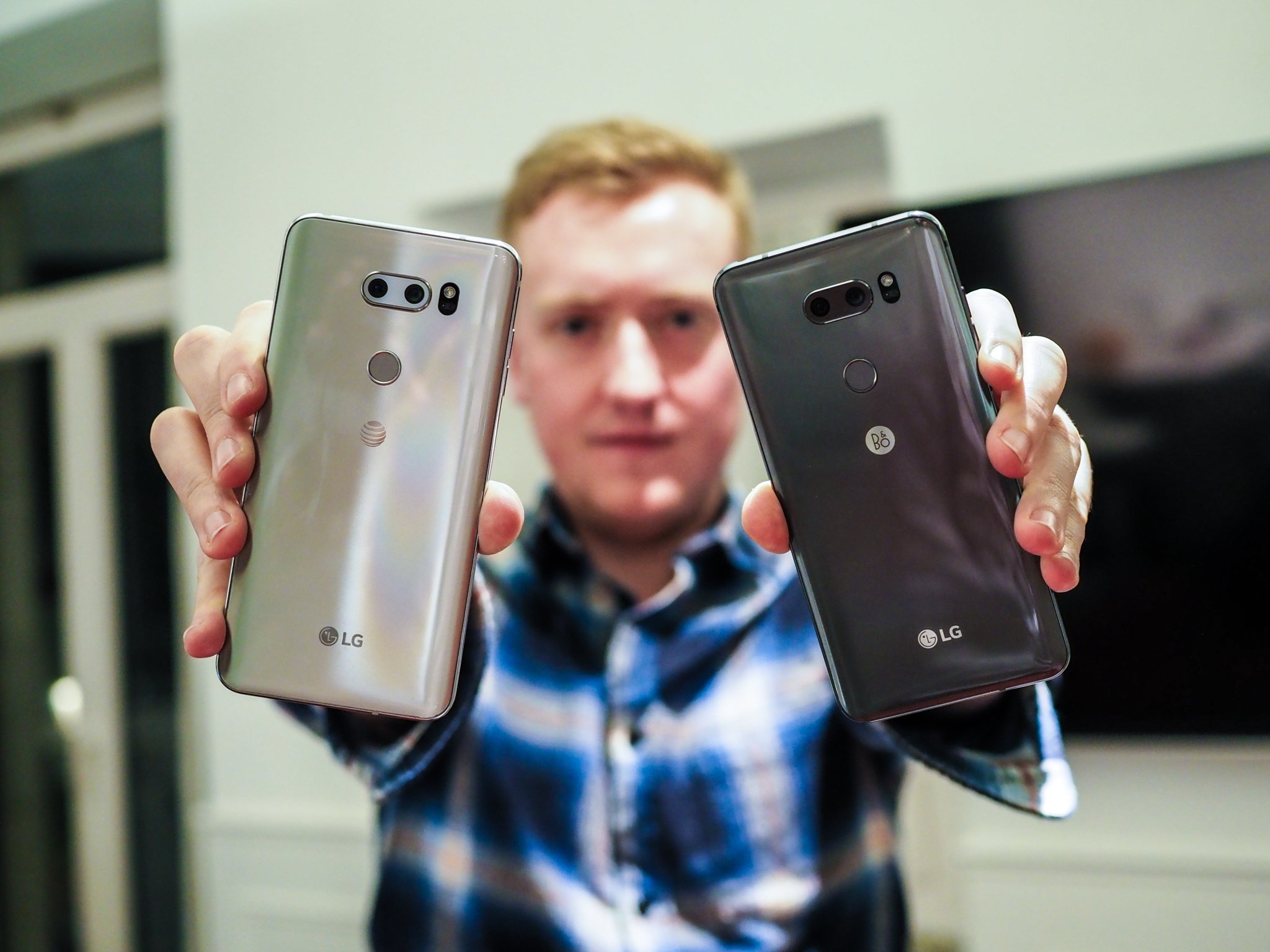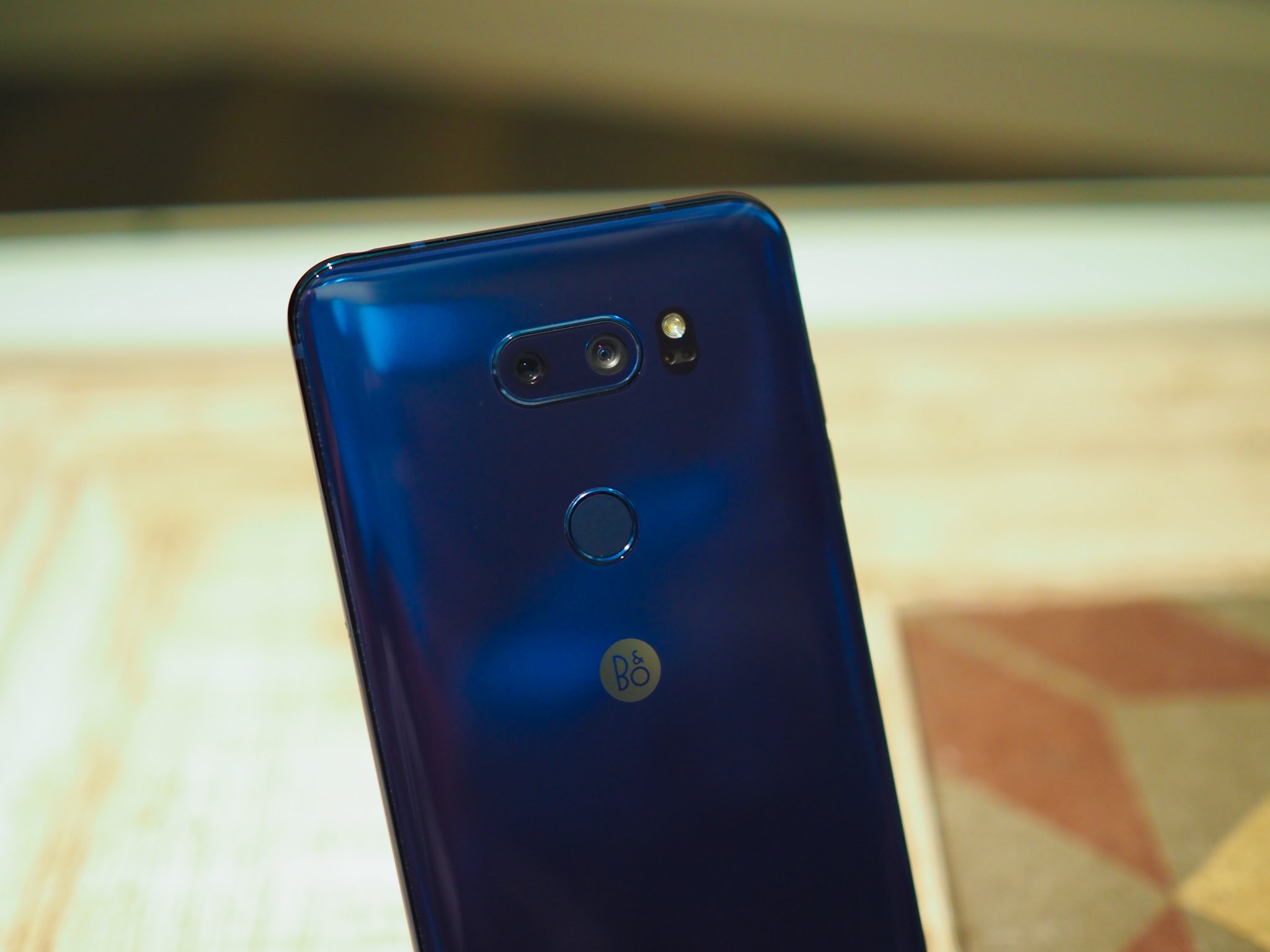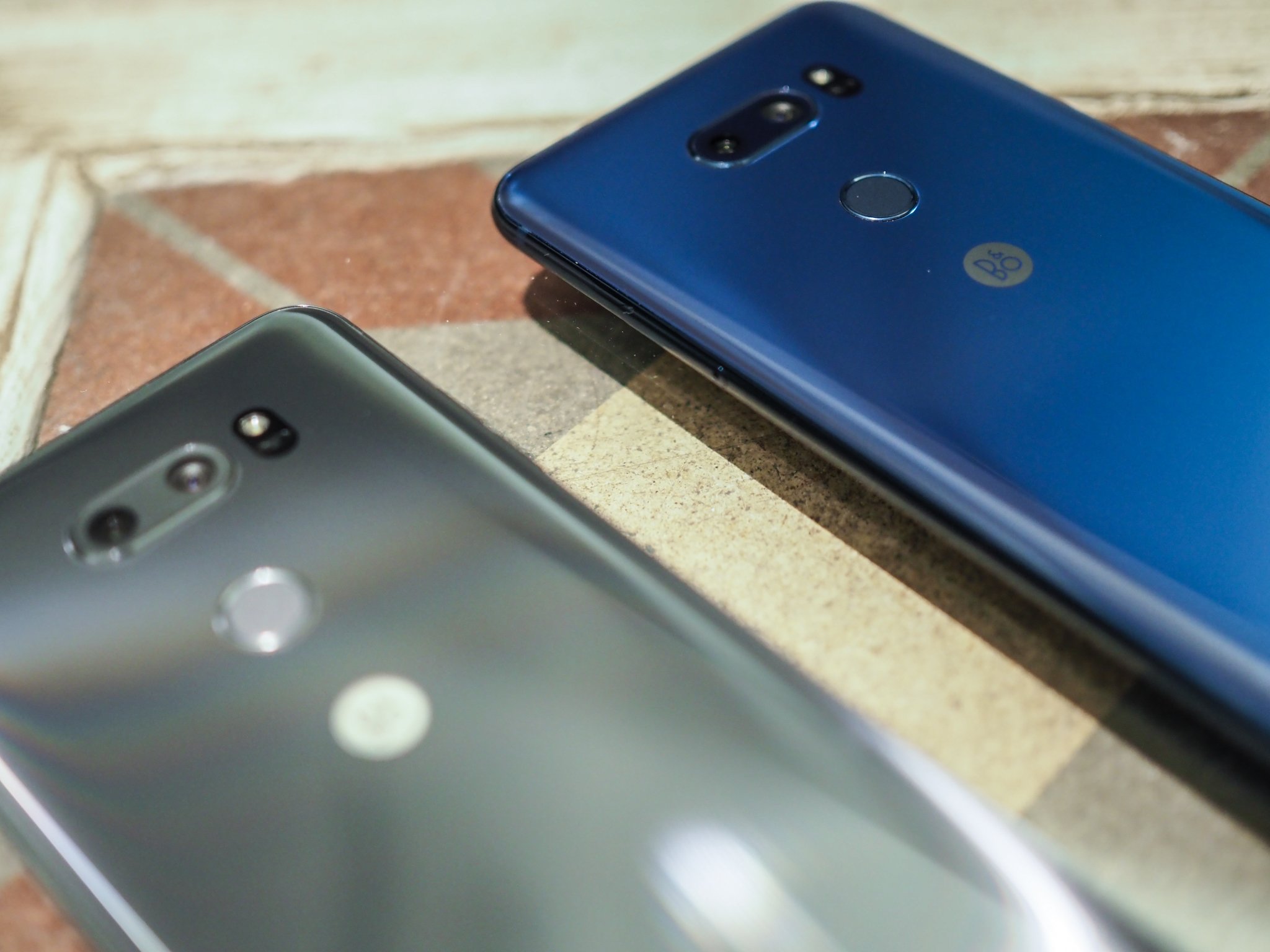The V30S brings the ThinQ brand to LG's phone lineup.
There's something about a new phone. It gleams, free of fingerprints, as you gingerly take it from its box.
The accessories, perfectly wrapped, have infinite potential. You turn it on and it boots to a clean home screen, ready for you to make it — anything. That's the beauty of the modern smartphone it; it does so much and it can do whatever you want it to do.
The LG V30S — technically, the LG V30S+ ThinQ, if you're being pedantic — is a sort-of refresh of the eponymous V30, which was released to great fanfare in late 2017. That phone vaulted the Korean company once again into the spotlight as one that cares about creators, but its robust photo and video tools were hobbled by poorly-performing camera sensors on the front and back.
As we approached MWC 2018, it became apparent that, under new management, LG's mobile division would not be releasing a successor to the G6 — that will come later this year, under a different naming scheme. It would instead revisit its most recently released phone with a renewed emphasis on AI, and an improved camera experience. Oh, and more memory.
Here's what you need to know about the LG V30S.
It comes in two versions
The V30 itself arrived on the scene with two storage options, a standard model with 4GB of RAM and 64GB of storage, and a V30+, sold at select carriers, with 4GB of RAM and 128GB of storage.
The V30S proposes the same naming convention: the standard model offers 6GB of RAM and 128GB of storage, while the V30S+ doubles the storage to 256GB. The latter is overkill for most people, but LG is framing this S variant as a special edition of sorts, so in that context, it makes perfect sense.
Outside of the RAM and storage differences, the hardware is identical to the V30: 6-inch 2880x1440 POLED display, Snapdragon 835, 16MP primary camera, 13MP wide-angle secondary camera, 5MP front-facing camera, 3300mAh battery, Quad DAC (and headphone jack), IP68 water resistance, HDR10 support, and more.
There's one other hardware change, actually: new colors.
There are two new colors
Along with the fresh memory and storage options, LG is touting two new colors — only weeks after debuting the LG V30 in Raspberry Rose, mind you — New Moroccan Blue (Europe received a darker, more navy-like Moroccan Blue V30) and Platinum Gray, which is slightly darker and more matte than the Cloud Silver V30. Still with me?
LG says that plenty of work went into making sure these colors stand out in a scrupulous 2018 design ethos, and they do indeed look great and feel modern. Whether they feel particular greater and more modern than the V30 ... well, we'll leave that up to you to decide.
Low-light photography gets a boost
One of the biggest criticisms of the V30 was how its 16MP rear sensor and f/1.6 lens handled low-light situations — in a couple words, not great. With the V30S, LG has implemented a familiar solution to alleviate the problem and help eke additional detail out of poorly-lit scenes: pixel binning.
LG V30S Bright Mode enabled (left) | LG V30S Regular low-light capture (right)
Specifically, when its new Bright Mode is enabled, it uses data from four pixels for every one it outputs, spitting out a 4MP photo with ostensibly four times the detail. It's not going to give your nighttime shots daytime detail, but it's a significant improvement.
AI for the win
Back at CES, LG debuted its nascent ThinQ AI ecosystem, which will adorn almost every product the company makes, from washing machines to fridges to speakers to phones, that has AI features built in. What does that mean? Right now, that's not exactly clear, though LG believes that proactive assistance will make all of its products better and easier to use.
On the V30S, which is LG's first ThinQ-powered phone, AI manifests itself in a few ways: the most instantly noticeable is a camera app that automatically detects scenes and changes shooting settings and color profiles for a variety of objects, from people to dogs to cans of beer. LG reportedly trained its AI engine using millions of photos from the EyeEm database, and the company plans to push regular over-the-air updates to improve and expand its recognition database. Right now, the scenes adjust for eight categories:
- Portrait
- Food
- Pet
- Landscape
- City
- Flower
- Sunrise
- Sunset
According to LG, "each mode enhances the characteristics of the subject taking into account factors such as the viewing angle, color, reflections, lighting, and saturation level." I'll have to employ further testing, but in my short time with the phone, a cloud of terms constantly cycles on the screen, settling on a particular one as it comes into focus.
It's a neat visualization for what I assume to be a very processor-intensive activity, but it remains to be seen whether these changes improve the quality of photos taken on the V30S. On the Mate 10 Pro, which also takes a similar approach to object optimization, the enhancements are quite subtle, and don't add much to the overall experience.
Another aspect of LG's AI prowess is QLens, which uses the camera app to read QR codes to more quickly and easily identify potential products to buy online. LG says that this is what people are doing already — window shopping in physical retail stores and then going online to find it cheaper — but I think the company overestimates the ubiquity of QR codes.
Does the LG V30S matter?
The question of whether LG should have released the V30S looms large over this product. By not announcing a successor to the G6 at MWC, it probably felt some pressure to put something up against the Galaxy S9 behemoth. But there may not be enough here to warrant much interest from the general public — the V-series is already pretty niche.
At the same time, LG says that the V30S could potentially replace the V30 in some markets, and live alongside it in other less price-pressured locations like the U.S., where phones are normally paid on monthly installment plans.
While the Bright Mode really does improve low-light photography, it doesn't turn a lemon into lemonade — just a slightly more palatable lemon. Similarly, the extra RAM should make a small difference in performance, especially when multitasking, but it probably won't offer any considerable improvement over the existing V30.
Pricing and availability?
At the time of writing, the LG V30S has only just been announced. LG says that local markets will release their own pricing and availability, though South Korea will definitely receive it first, and will likely only have to wait a few weeks from now for the privilege.
Given that all four U.S. carriers jumped on the chance to sell the V30, and some the V30+, it stands to reason than the V30S and V30S+ should find their way stateside in the coming months. But even the least expensive V30 is still $800 in the U.S., so it wouldn't be unreasonable to see the V30S crack $1000, a hard pill to swallow for 2017 tech wrapped in 2018 marketing.
Your take
What's your take on the LG V30S ThinQ? Let us know in the comments below!














Tidak ada komentar:
Posting Komentar